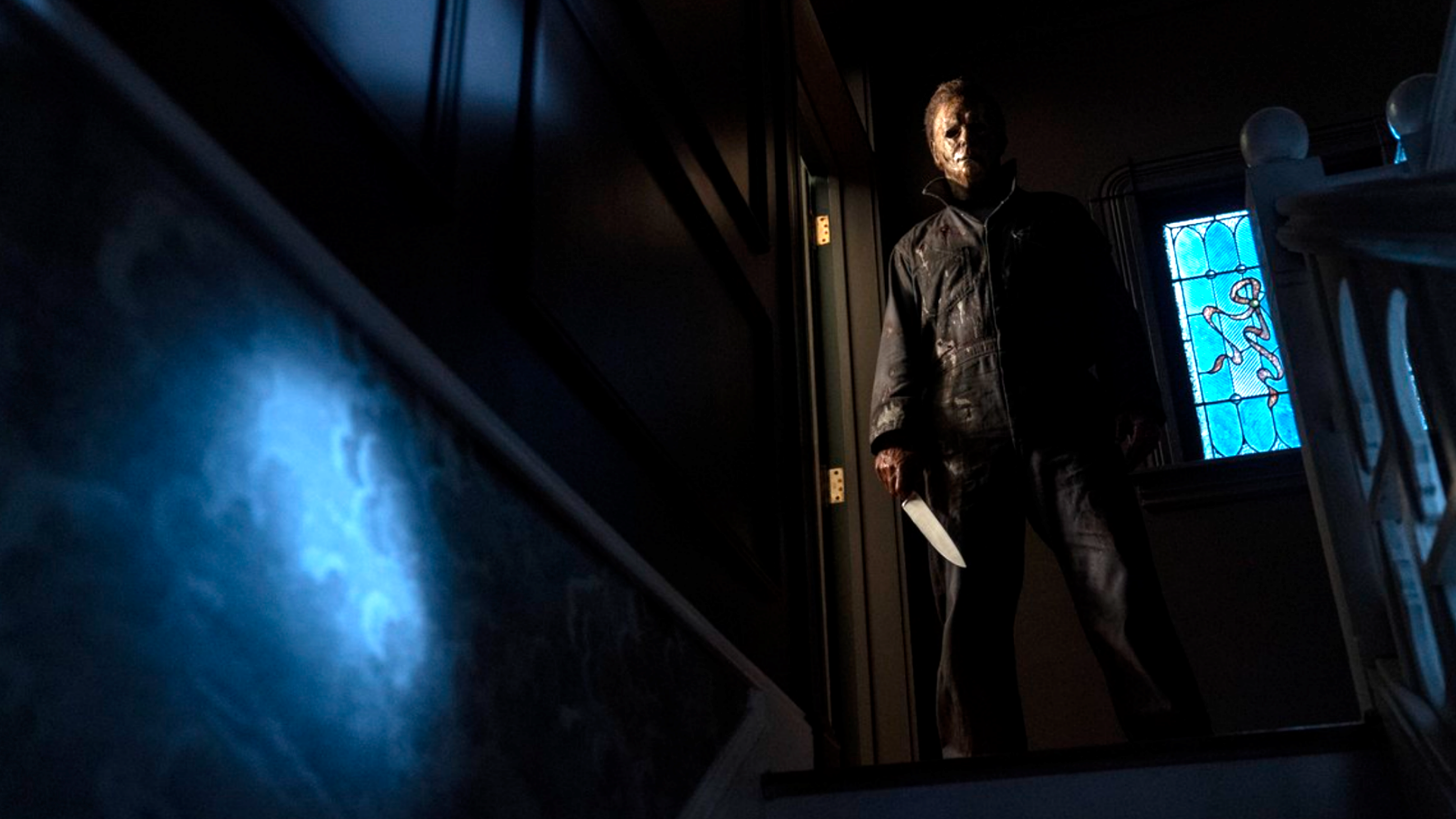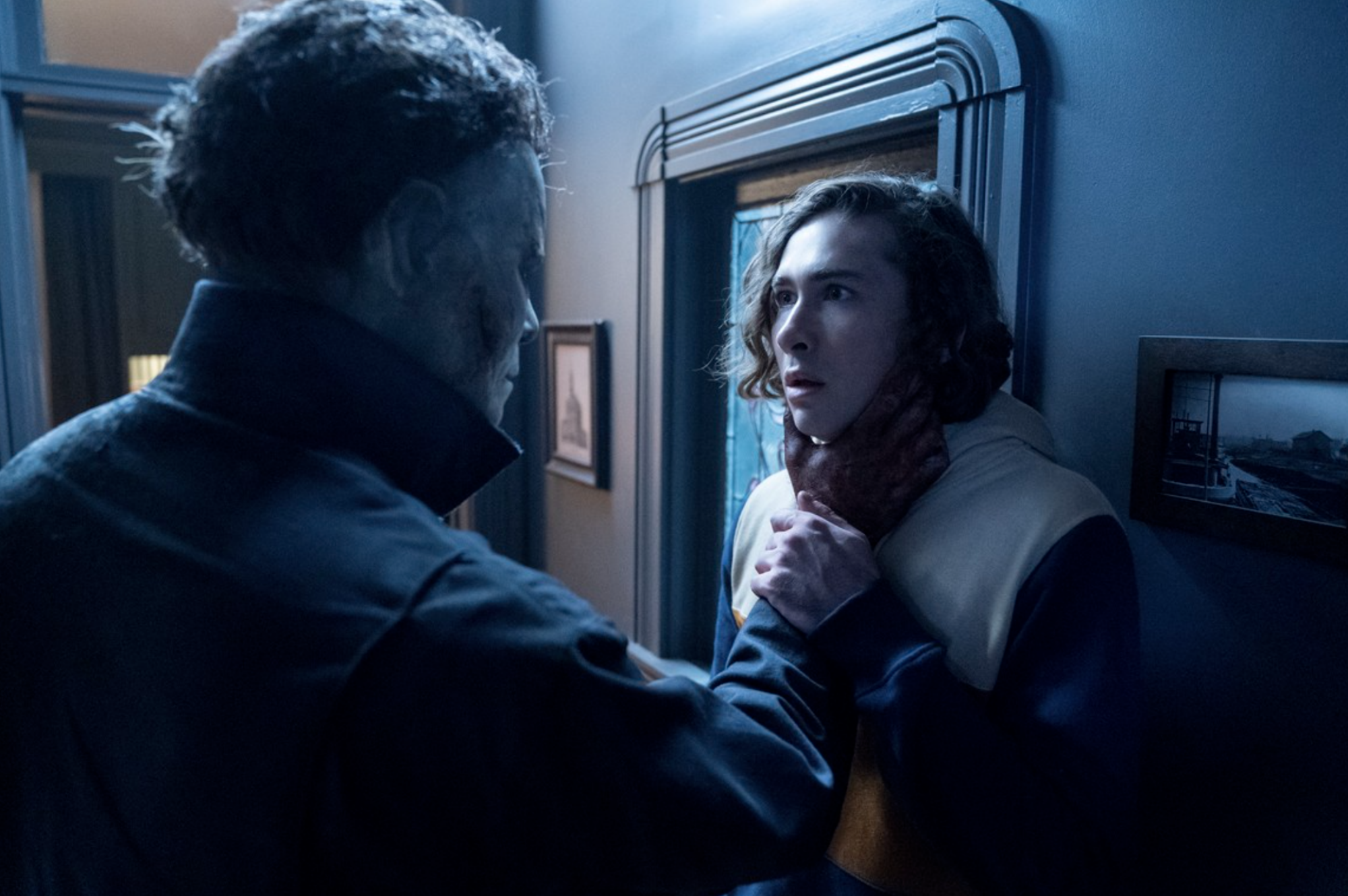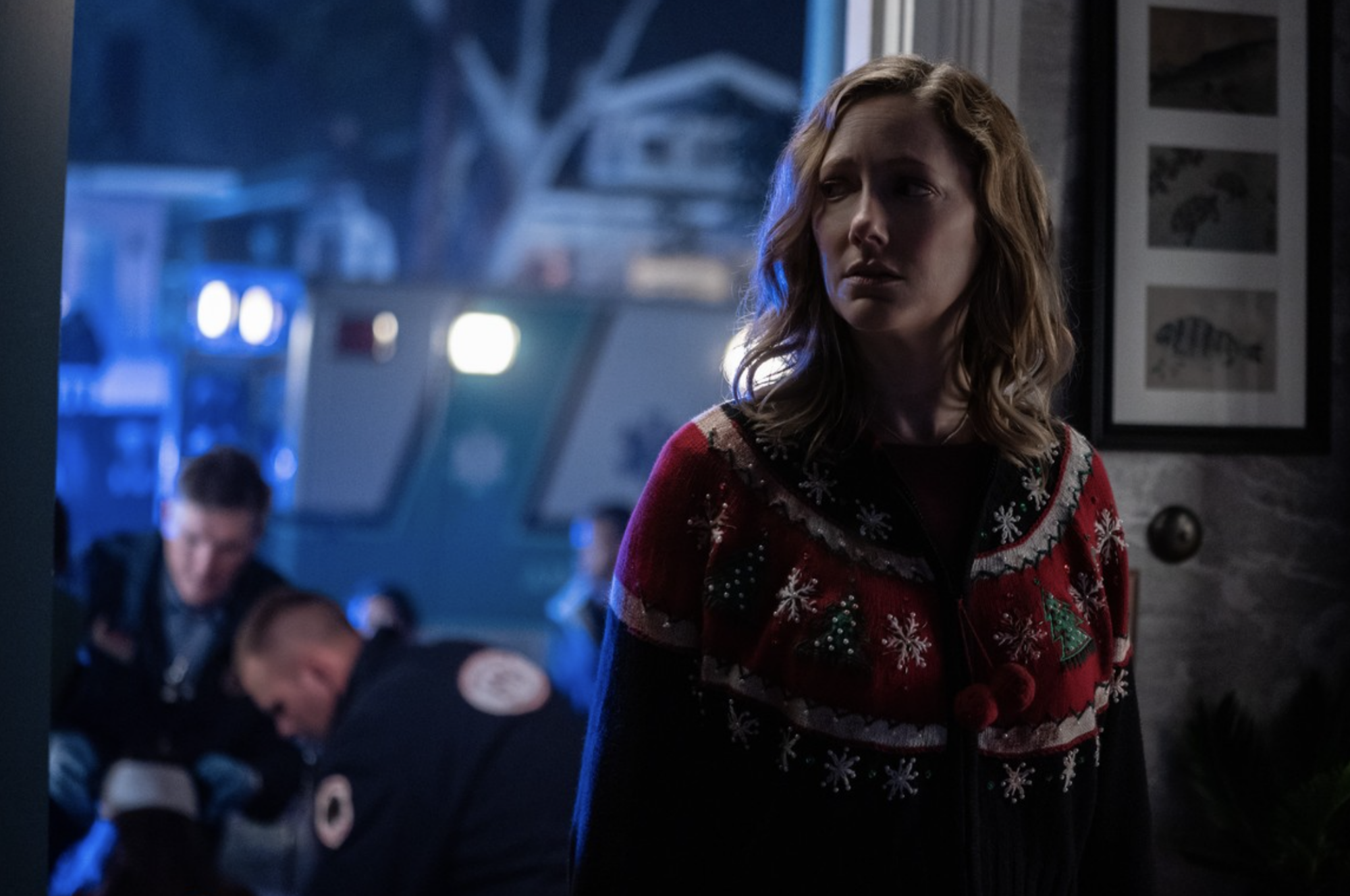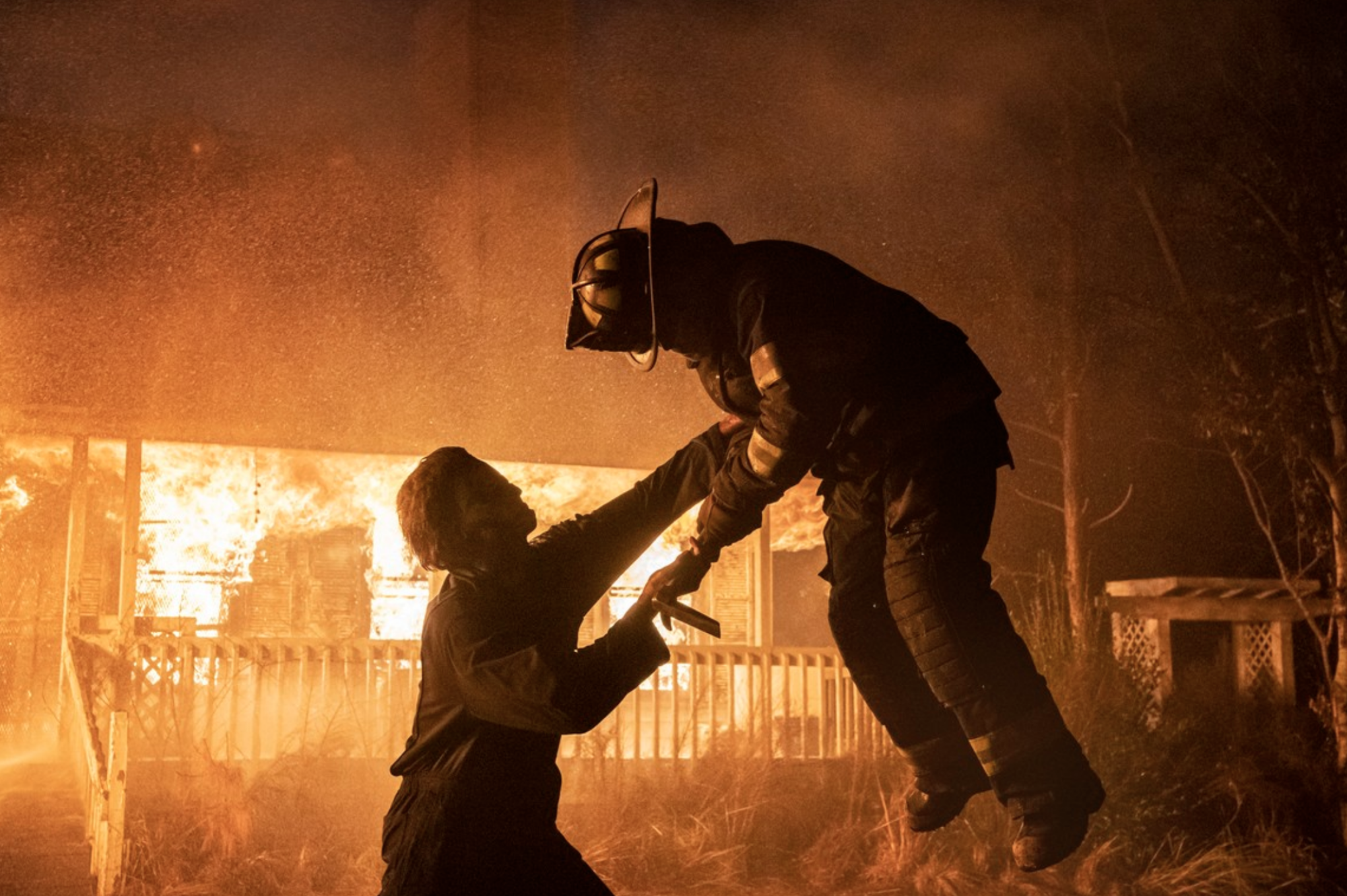
Michael Myers won because Michael Myers always wins. That’s the tough-to-swallow takeaway of Halloween Kills, director David Gordon Green’s controversial sequel to Halloween (2018).
It’s easy to see why the ending inflamed some. Michael has survived fiery car crashes, brutal stabbings, hospital explosions, and even a gnarly fall down a mineshaft before. But this Halloween outing, propelled by Haddonfielders’ rallying cry of “EVIL DIES TONIGHT,” actually seemed like it could — and should — end Michael. Of course, with another sequel, Halloween Ends, expected next year that was never going to be true.
In the final moments of Halloween Kills, The Shape gets the cockroach treatment after he’s lured into a trap by Laurie Strode’s daughter, Karen (Judy Greer). Bullets, bats, and blood fly as he’s beaten down by Haddonfield townsfolk in the street outside his childhood home. With the score from John Carpenter’s 1978 original wafting over the carnage, Michael appears dead — dead-dead. Like we watched Karen insert a knife into Michael’s spine dead.
And yet, against a backdrop of shaken survivors still wrapping themselves in EMT-provided blankets, he re-animates. After taking out the enemies nearest him, including a grown-up Tommy Doyle (Anthony Michael Hall), Michael pursues an oblivious Karen inside his former home and kills her.

Credit: universal pictures
So, uh, what happened? From her hospital bed, Laurie Strode (Jamie Lee Curtis) posits a theory in narration: “I always thought Michael was flesh and blood like you and me, but a mortal man could not have survived what he’s lived through. The more he kills, the more he transcends into something impossible to defeat.”
Suspicions of Michael’s supernatural abilities have dogged the franchise for decades, with some past installments outright confirming them. Halloween 4: The Return of Michael Myers (1988) and Halloween 5: The Revenge of Michael Myers (1989) laid the groundwork for Michael’s supernatural strength and stealth being connected to some otherworldly force. Then, Halloween 6: The Curse of Michael Myers (1995) tied his origins to a demon-worshipping cult and portrayed him as a sympathetic figure victimized in childhood. Critics weren’t a fan of this development then either.
The more he kills, the more he transcends into something impossible to defeat.
In this latest iteration, however, supernatural shenanigans seemed off the table. Picking up 40 years after the events of Halloween (1978) and consequently establishing the fifth timeline in the franchise, the 2018 sequel once again positioned Michael as a very human killer inexplicably fixated on Laurie. As a small mountain of positive reviews pointed out, that made it tonally true to the original in ways other Halloween sequels were not. That Michael was assumed dead at the end of both the original and the 2018 pseudo-reboot (post-credits breathing sound notwithstanding) sticks out as especially fitting.

Credit: universal pictures
The instant Universal Pictures opted to expand Green’s single film success into a terrifying trilogy, who or what Michael would be in this Halloween universe changed. This 2021 sequel seems to draw faithfully from the well-regarded Halloween II (1981) as both occur immediately after the events of the preceding film and see Laurie stuck in a hospital for much of the runtime. Yet, it’s imbued with the legacies of a dozen films in total. (OK, eleven if you drop the awesome but totally Michael-less Halloween III: Season of the Witch.) To not acknowledge the death-defying staying power of this villain would be at best narratively flimsy and at worst wholly unbelievable.
Of course, Halloween Kills could’ve handled Michael’s fake-out demise without the supernatural elements. For example, the ending of Halloween H20: 20 Years Later (1998) sees Laurie decapitate Michael with an ax; then the start of Halloween: Resurrection (2002) explains this kill away as a case of mistaken identity. Similarly, at the beginning of Halloween Kills, Michael’s survival of a house fire is explained by a fireproof metal door and an ill-advised rescue by some firefighters.

Credit: universal pictures
But a gritty, grounded Michael is something we already have; see Rob Zombie’s Halloween (2007) and Halloween (2018). By showing what should have been Michael’s definitive stamping out and then allowing him to immediately rise again, Halloween Kills offers a maddening data point that sets up an opportunity to better reconcile elements of his disparate legacy in the next chapter. How that will be done remains to be seen, but Green seems inclined to thread the needle differently than the Halloween directors who came before him.
“The suggestion that he is more than a man is a theory that Laurie has,” Green said in an interview with IGN. “My own personal concept for Michael, which will carry forward as long as I’m involved, is that he’s capable of spectacular things but not impossible [things]. So I don’t personally see him as supernatural, but I see the element of fear that he’s generated and exacerbated is transcending the immediate character and moved on to an entire community.”
Laurie actually drives this bit home in her ending narration, by adding: “Fear. People are afraid. That is the true curse of Michael.”
That’s admittedly pretty squishy. But if you came into Halloween Kills expecting anything other than a middle chapter setting up a grand finale, then you haven’t been with this scarily silly franchise long enough. Daring to actually set up a scene where Michael ought to have been stamped out and then addressing why he’s back yet again serves not to piss you off but also to honor the decades of pissed-off audiences that came before you.

Credit: universal pictures
Whether tying that all to a sanctimonious mob mentality narrative works for Halloween Kills is worth debating. But to claim the ending is what’s wrong with this Halloween movie is to harbor the banally basic opinion that nothing can ever be as enjoyable as the original. As it stands, this intriguing ending builds on Michael’s mythic past in a manner that pays homage to the many lives he’s lived before this one. What’s more, it’s forcing a critical question to the forefront of Halloween Ends that no previous chapter has adequately answered: What kills the Boogeyman and why?
Sure, arguing that an ending is good because it makes you excited for the next one is part of the insidious scam that is franchise slashers. Halloween Kills made $50.4 million at the box office. And despite the controversy, you can bet Halloween Ends will do even better. Still, for my money, acknowledging the cyclical nature of a franchise as emotionally captivating and freaky frugal as this one remains the right choice.
No, evil didn’t die that night. But evil never dies any night. That’s the whole point of Michael. And if you’re still running from that reality, you’ll never enjoy what’s right in front of you.
